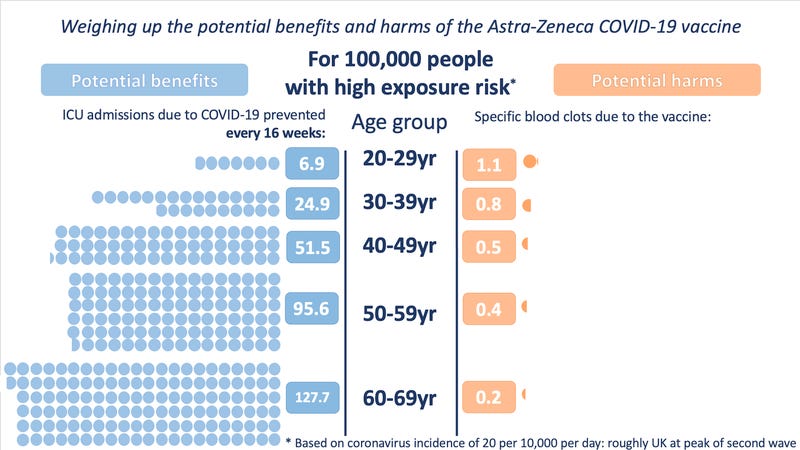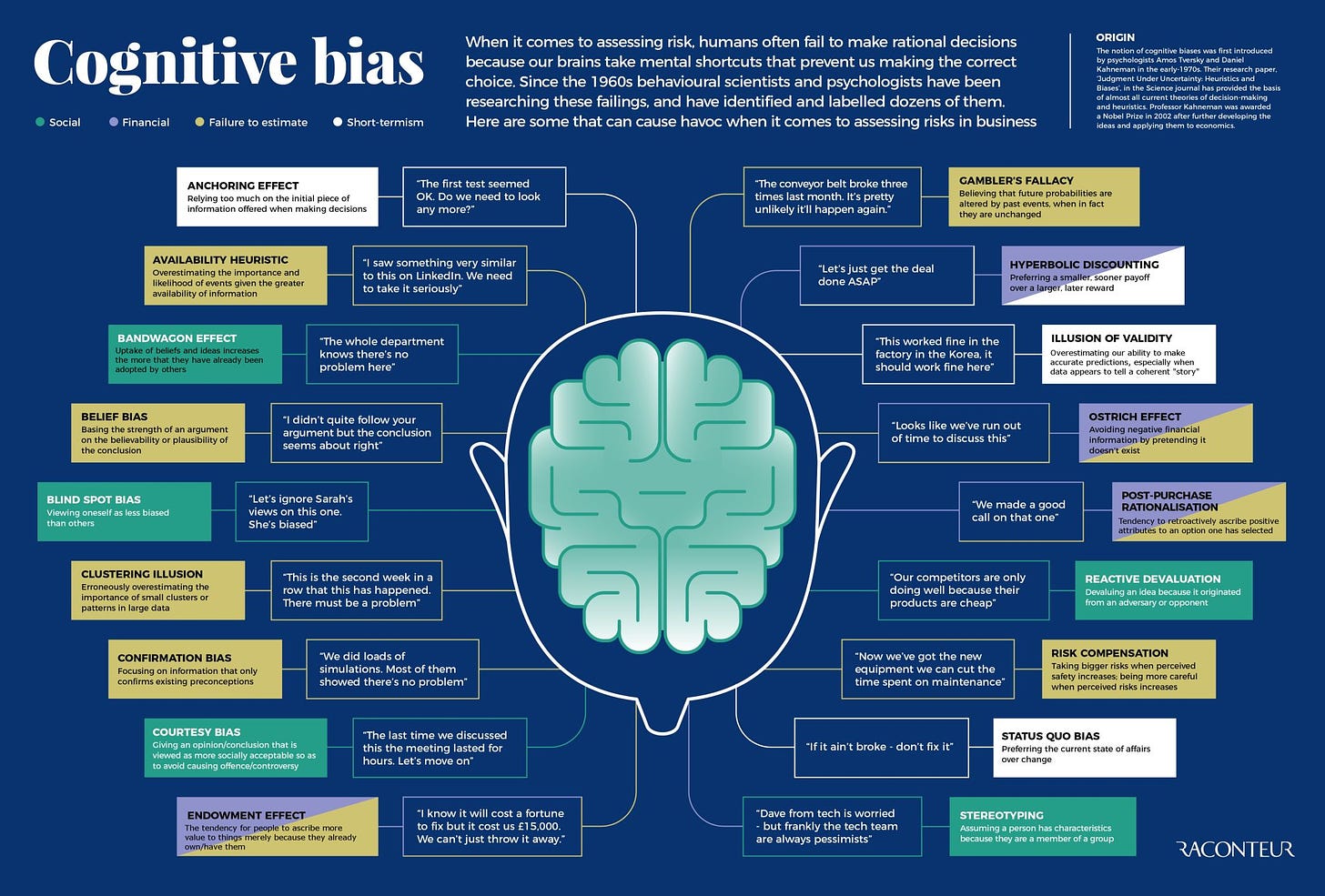3BI: vaccines, endowment effect, and cognitive biases
Welcome to my weekly 3BI newsletter sharing three insights from the worlds of psychology, decision-making, and behavioral change. Sign up here to have it delivered straight to your inbox.
For more insights between newsletters, follow me on Twitter.
Hello and happy Friday! It’s feeling like spring in Chicago and more and more people are being vaccinated - including myself!
I was especially excited to get a sticker. Go get your shot if you haven’t already!
Vaccines and the endowment effect
The endowment effect describes how people tend to value items that they own more highly than they would if they did not belong to them. Basically, we usually value an item much more if we already own it than if we don’t:
…any tactic that makes us feel a sense of psychological ownership over a product can encourage us to spend more on it. On the other hand, as sellers, the endowment effect can lead us to price things unreasonably, based on a misguided sense that if we don’t, we’ll lose out.
A sense of ownership can also impact actions beyond buying and selling. In a recent study, researchers found that it can motivate vaccine uptake.
In the study, researchers tested the effectiveness of text message reminders to schedule vaccine appointments after being notified of their eligibility with patients in a large healthcare system. The reminders aimed to make eligibility more salient and reduce friction in scheduling appointments. Overall, the text-based reminders were effective: they increased appointments by 5% and vaccination rates by 3% - a relative improvement of 86% and 26%, respectively.
The most effective reminders, though, utilized the endowment effect: messages indicating the vaccine had “just been made available for you” and that encouraged patients to “claim your dose” increased appointments and vaccinations by and additional .23 and 0.82 percentage points.
This shows how much of an impact simple and cheap behavioral interventions can have. As the authors say:
Our research highlights that behavioral science insights can substantially increase and speed up vaccinations at close to zero marginal cost.
Read the paper here and learn more about the Endowment Effect at Decision Lab.
Communicating risks and benefits
The FDA stirred up controversy this week by pausing administration of the Johnson & Johnson vaccine due to 6 known cases of blood clotting. Many thought this was overly cautious and potentially damaging to vaccine confidence.
It brought to light the challenges of communicating benefits and risks of medicines. It’s obviously very important for regulator to exercise caution and notify citizens of potential side effects, but people struggle with naturally calculating risk and tend to give disproportional weight to them due to negativity bias and availability bias.
After the Astra-Zeneca vaccine faced a very similar issue in Europe, researchers at the University of Cambridge calculated the benefits and risks of the vaccine and translated them visually:
This, for example, demonstrates the risks and benefits for those with high risk of exposure to the virus.
Since our minds are more visually driven, this seems like an effective way of communication benefits and harms.
Cognitive Biases
Here’s a cool visual of some of the most common cognitive biases and their origins (click it to enlarge):
Other stuff
This is a great Q&A on the J&J vaccine issue with chemist Derek Lowe. There’s a lot of good insight into how pharmaceuticals like vaccines are tested and tracked for potential side effects. One key point is that the late discovery of the blood clotting issue is not due to the vaccines being “rushed,” as it may seem due to the speed of their development, but because clinical trials aren’t meant for finding such rare risks: “We didn’t see this because no one has ever run a clinical trial large enough to get any good statistical read on such rare events.”
Have a great weekend.





